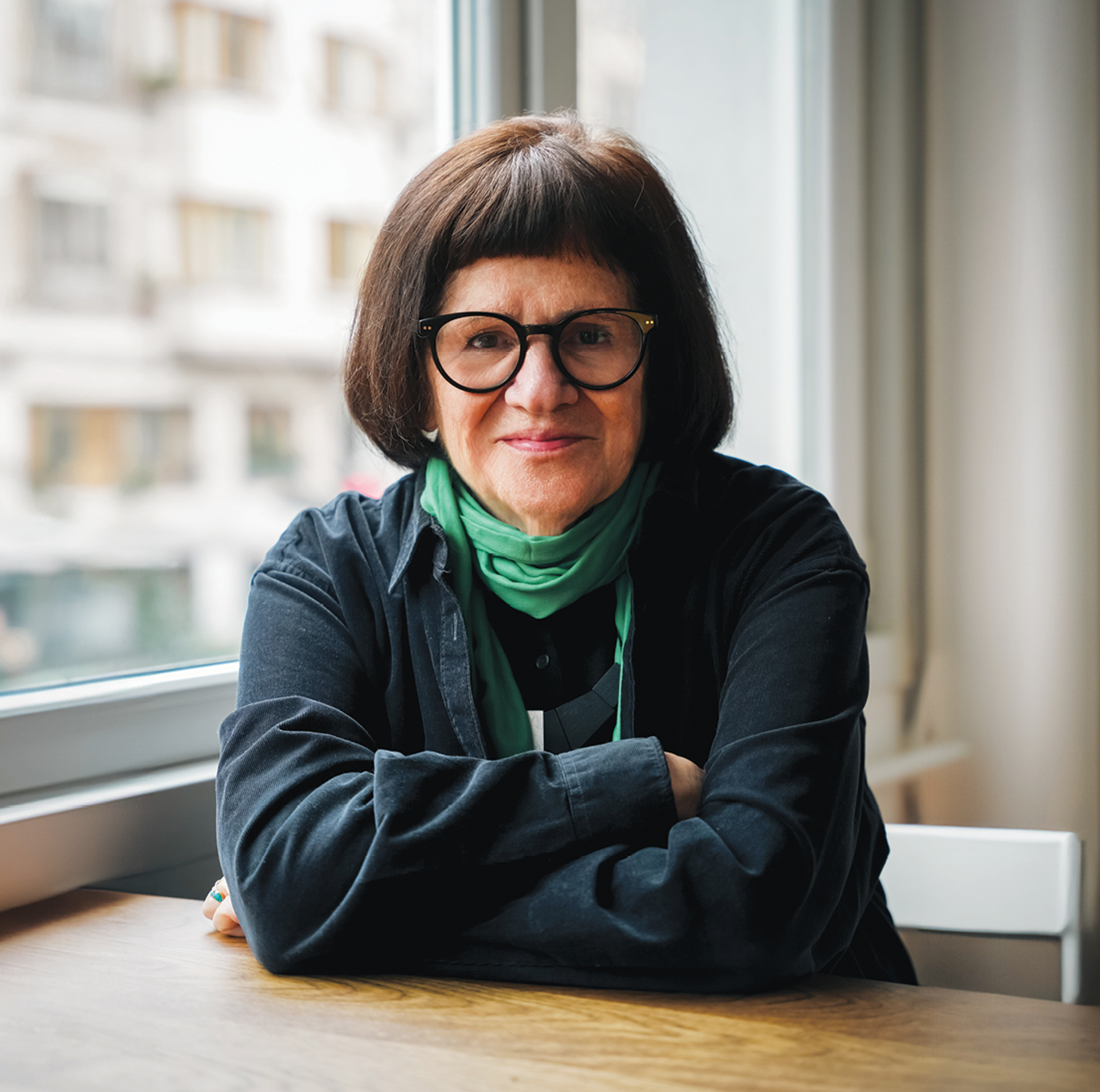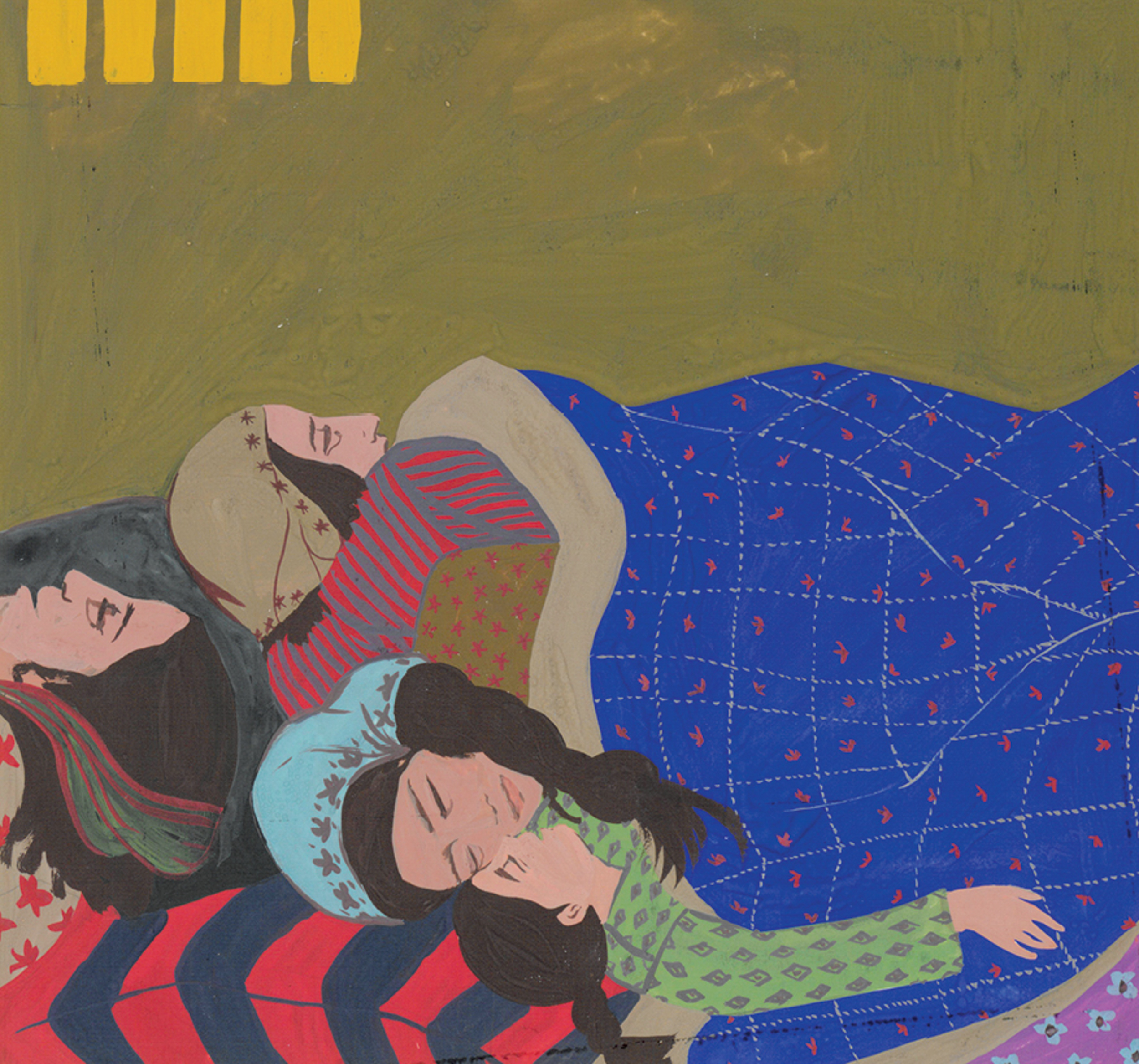Gülsün Karamustafa: In a Troubled World
By MATT A. HANSON

Portrait of GULSUN KARAMUSTAFA. Photo by Fatih Yilmaz.
Looking back over half a century of confronting the Hydra-headed force of global affairs, the esteemed Turkish artist Gülsün Karamustafa has two words for humanity: hollow and broken. These words also form the first part of “A State of the World,” the title of her Türkiye Pavilion exhibition at the 60th Venice Biennale—reflecting their concern in the face of the systemic self-destructiveness of modern existence.
“When I was informed about Venice, the war was continuing in Ukraine. We also had this unbelievably harsh earthquake in southeastern Turkey and Syria in which many lives were lost. Then, when I started to think over a new project for Venice, a new war started,” Karamustafa tells me over the phone, contemplating her present means of inspiration, aligned with what could be aptly described as a dark and solemn vision of the state of the world. “This made me very decisive of what I wanted to do. This was about this hollowness of the world, as well as this ever-shifting playground for wars, because all my life I have been living with the idea of war, where everything around me was falling down. I thought it would be good to talk about this in the venue I was given, the Venice Arsenale.”
In the Sale d’Armi of the Arsenale, an armory built circa 1460 during the Venetian Republic that doubled as an illustrious reception hall and display of military power in the medieval port city, Karamustafa has been working with local Italian glassmakers to install shattered remnants of chandelier fixtures, complete with a colonnade and a video in which she reedited propaganda films from around the world, sampled from the video archive CriticalPast.com. Not only the martial precedence of its history, but the architectural features of the rectangular Sale d’Armi caught Karamustafa’s eye, especially with its three-column structure, defining a center and symmetrical interior design. She was transported back home to Istanbul’s Sultanahmet square, imagining the blood-stained repute of its vanished Byzantine hippodrome. “I always try to put something of the city, of the country, of wherever I am, of where I am standing, into my project. And I have always been enchanted by Venetian glass.” This led her to neighboring glass factories to admire their famed chandeliers. “Why not point to those three heavenly religions through these chandeliers, because every one of them has a chandelier in their praying space.”

GULSUN KARAMUSTAFA, Double Jesus and the Baby Antelope, 1984, textile collage, 185 × 230 cm. Photo by Baris Ozcetin. Courtesy the artist and BuroSarigedik, Istanbul.
Through her prospective work representing the interfaith application of chandelier glass, Karamustafa is consciously paying homage to an earlier work, Trellis of My Mind (1998), a tapering, 20-meter frieze comprised of 300 color religious illustrations from Islamic, Christian, and Jewish manuscripts, presented the year of its production at Kassel’s Documenta 10. With a blurring effect, Karamustafa strikes the common, overlapping roots of iconographic transparency, pervading the boundaries of otherwise divisive religious traditions toward a shared imagination.
For Venice, “Hollow and Broken: A State of the World” will feature three chandeliers covered with a cloud of barbed wire, transposing material fragility with the hazards of war, obscuring its innate, shimmering beauty. While she was in one of the chandelier workshops, she noticed containers of fractured glass, and reaching out to touch their gleaming surfaces, cut herself, and bled. Feeling the pain, she decided to include these glass shards in the venue, thereby crystallizing the idea of brokenness. Her particular conception of that which is hollow for the show came after she gravitated toward column molds, conveying the empty pride of their civilization-building effect in her installation, After the Cosmopolis (2022). Here, the emblems of constructive power are unable to stand on their own, supported by iron braces and shipped in from a Chinese manufacturer she sourced online.
“In the end, I needed one more step to speak about the whole thing, a small film which I will show there,” she says, referring to her research at CriticalPast.com. “These are films shown before a film about war starts. I made a new edit out of plenty of them with my way of looking at the footage. I didn’t follow the idea of the cameraman or anyone at the back of the camera. I’m looking toward the audience with groups of people who were shot by the camera.”

Installation view of GULSUN KARAMUSTAFA’s "After the Cosmopolis" at Lunds Konsthall, Sweden, 2022. Photo by Olof Nimar. Courtesy the artist and Lunds Konsthall.
Describing Venice as a “world platform,” Karamustafa maintains that the project came out easily, an outcome of the “many, many small things that I’ve spoken of up till now, which are of course the things I know from my life, from my geography, from where I live, my city. They all came together for me in this venue.” This stream of solidarity with victims and dissidents affected by war, migration, and protest has coursed throughout Karamustafa’s career since she began producing work after her graduation from the Academy of Fine Arts, Istanbul, in 1969. Aligned with burgeoning antiwar and feminist activism across the globe, she was jailed in 1971 for aiding
protestors during Turkey’s military coup, spending six months behind bars where she conceived her Prison Paintings (1972–78) series, which did not appear in public until her retrospective solo show, “A Promised Exhibition,” at Istanbul’s Salt in 2013.
The female figures that crouch and huddle in dim confinement in her Prison Paintings wear vividly dyed clothing, the outlines of their bodies almost like sculptural reliefs against the cartoonish unreality of the lifeless interiors. This garish color scheme reappeares in her work Mystic Transport (1992), as well as when she was an art director on the film A Sip of Love (1984) by Atıf Yılmaz, which carries her signature style and segues into her textile collages, such as Double Jesus and the Baby Antelope (1984), one of her favorite pieces.
Replete with leopard prints, her textiles bear a self-Orientalist stripe of religious kitsch and exotic animalism; Double Jesus and the Baby Antelope evokes the Anatolian wilderness that countless internal migrants in Turkey have waxed about nostalgically, though they live in overnight-built shacks that still line the hills of the Bosphorus as a testament to Istanbul’s overpopulation. Karamustafa chronicled the socioeconomic trauma with an endearing brand of mutual empathy within Turkey’s nascent contemporary art world while being banned from leaving the country for 16 years between 1971 and 1987. To cope, she worked incessantly. “I have had a continuous career for more than 50 years, and without stopping I would like to continue as long as my health enables me. I’m not thinking about milestones, or stops, in my outcome. They’re all flowing, following each other. I never like to go back to other work.”

GULSUN KARAMUSTAFA, Prison Paintings 6, 1972, mixed media on paper, 56 × 52.5 cm. Courtesy the artist and BuroSarigedik.
Educated as a painter under the tutelage of the painter Bedri Rahmi Eyüboğlu, and alongside peers Ayşe Erkmen and Füsun Onur (Türkiye Pavilion artist at Venice in 2022), Karamustafa is a leader among a generation that paved the way for contemporary art in Turkey when the country was more closed off from the rest of the world than it is today. Avoiding full institutional employment to pursue her practice as an independent artist, while accepting visiting professorships Karamustafa developed a distinctive style of installation art. She explains how the surfaces of her paintings became inadequate as she sought to grapple with the materials they portrayed.
This process from painting to installation grew out of her work on feature film sets, which she pursued as a young mother in need of an income, peaking as codirector of My Cinemas with the writer Füruzan in 1990. Recounting a tale of proud, if embattled female sexuality, as in A Sip of Love, My Cinemas, also evoked Karamustafa’s PhD training at the State School of Applied Fine Arts, comparing posters to painting. My Cinemas foregrounded the last artists of handmade film ads in Istanbul prior to their mass digitization.
“I can’t say I’m a ‘feminist artist,’ or that I’m doing works about ‘migration.’ I’ve been labeled like this for many years. I would like to keep away from such definitions.” She says this as the granddaughter of Bulgarian migrants and the artist behind such works as Courier (1991), in which she lined clothing with postcards referencing border-crossing stories from the Balkans, or Mystic Transport, presenting the iconic, glossy blankets that appear abundantly in the homes of Turkey’s internal migrants in A Sip of Love folded into large baskets, again suggesting the mass movement of their invisible human subject. She has repeatedly emphasized such points of economic and class distinction as an artist and filmmaker whose work has explicitly grappled with the struggle for female liberation in Turkey’s patriarchal society. “I’m working on everything to do with ‘humanity.’ I don’t like this word, but I can’t find a word in English that expresses my feeling,” she laments. “I try to explore issues that I know and that I work on well. They all go together in my practice.”

Installation view of GULSUN KARAMUSTAFA’s Mystic Transport, 1992, 20 moveable metal baskets, 90 × 60 × 45 cm each, at Turkey Pavillion, 3rd International Istanbul Biennial. Photo by Vasif Kortun. Courtesy the artist and IKSV, Istanbul.
.jpg)






